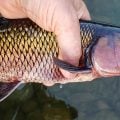Fellowship of the Ring: How and When to use Tippet Rings

Every one of us wishes for the occasional “easy button.” That small or big thing that acts as a sort of cheat code to make a difficult or trying task quicker and easier. These little “life hacks,” as they’re popularly known, exist in almost everything we do, including fly fishing.
Fly fishing itself is a complicated angling style where we add a thousand extra steps to the relatively simple process of catching fish. But learning the complex casting techniques and involved fishing methods are a part of the what makes the sport so fun. Still, there are some aspects of fly angling that seem tedious. Tasks like setting your rod up, spooling up reels, and particularly tying the endless amount of complicated knots required for fly fishing can be an incredible pain in the ass, especially when fish are rising in front of you. There is a way to make at least the knot tying frustrations a bit easier on your psyche—using tippet rings.
What is a Tippet Ring and What Do they Do?
Tippet rings are small metal rings used to tie and connect multiple sections of fishing lines all with simple clinch knots. Looking like miniature hula-hoops for leprechauns, these tiny rings are fantastically helpful tools for fly anglers who want to skip making a complicated series of multiple knots every time they hit the water.
Tippet rings are great for making fast leader changes or extending leader length. They can also be of use for those frugal anglers who don’t like to buy a ton of new leaders because tippet rings can significantly extend a leader’s life by negating the need to constantly trim them down. Tippet rings are also perfect for creating and fishing with rigs that require multiple trailing lines, such as when you’re Euro-nymphing, and adding droppers to single-fly rigs.
To use a tippet ring, you simply tie it to the end of a new leader with a clinch knot. Then you can add any length of tippet to the other end of the ring, or even add a second length of tippet off the side of the ring to create a trailer rig. These can be great with a dropper weight for fishing tightline rigs with both streamers and nymphs. You can also tie tippet rings beneath indicators or even large dry flies to create multiple fly set ups—all with only a couple clinch knots holding everything together.
Tippet rings come in a variety of sizes to cover all your fly fishing needs. From the common 1mm and 2mm, which are great for trout fishing set ups, all the way up to the 3mm and even 5mm rings for larger fish like salmon and steelhead. Understand that while tippet rings make knot tying easier, the advantages come with disadvantages that should be considered.
Ringing Advantages and Disadvantages
The tippet ring’s biggest advantage, as mentioned, is that they eliminate a lot of complicated knot tying by narrowing everything down to the simple clinch. Rigging up much quicker and easier when creating a complicated, multiple-fly setup or when fishing on cold days when your fingers are frozen stiff and useless as a screen door on a submarine. They also provide stronger, more reliable connections than any basic line to line connection and are extremely simple to use. But this doesn’t mean tippet rings are perfect.
The most obvious disadvantage is that they are so damned small. While many companies sell them on snap swivels or bars to make dealing with them easier, if the tiny rings slip off their holder or come without one, trying to use them is an exercise in micro-frustration. They’re easy to lose and hard to tie on when they’re loosely floating around, making your days on the water infinitely more complicated if you can’t keep them contained.
In addition, many anglers believe that tippet rings inhibit the natural drifts and movements of flies. Though extremely light, the tiny rings are made of metal, after all, and are bound to add at least some increased weight and stiffness to your presentation. Whatever disruptions they do add to your presentation are likely so tiny trout will only notice them when fishing in extremely shallow, clear water. Unless you’re constantly fishing in these conditions, tippets rings aren’t really going to have much of an impact on your presentation.
The Easier the Better?
Satisfaction in life is about overcoming challenges, but that doesn’t mean a little help diminishes the experience. Many anglers look at tippet rings as cheating and a way to avoid learning the complicated and intricate knots associated with being a “good” fly angler. In the end, though, isn’t being a good fly angler about loving our time on the water while catching as many fish as we can? We took up fly fishing to both enjoy and challenge ourselves as anglers, and with so many aspects of the sport already so difficult to learn, there’s nothing wrong with pushing the easy button every now and again. Especially if it helps catch more fish.











